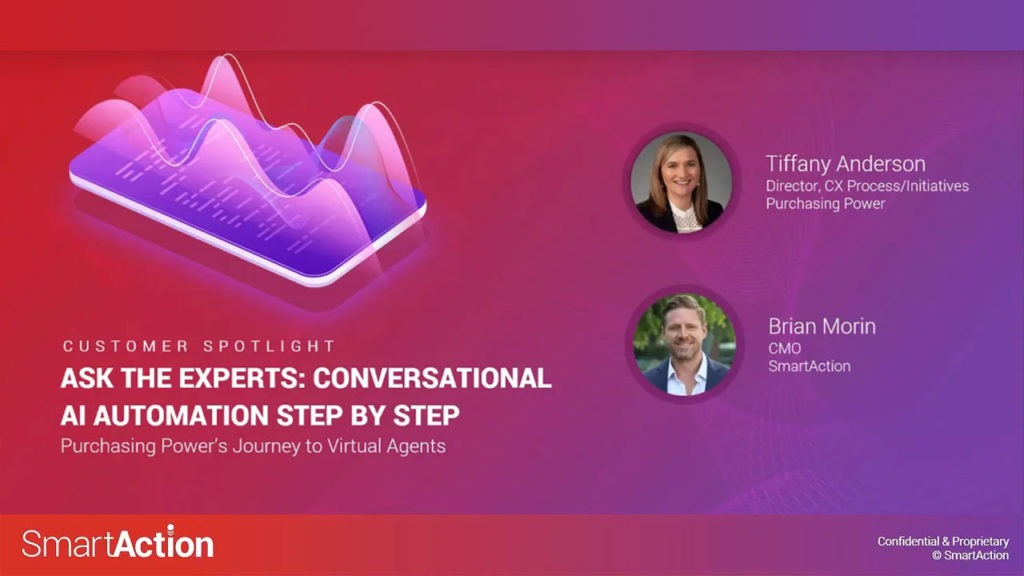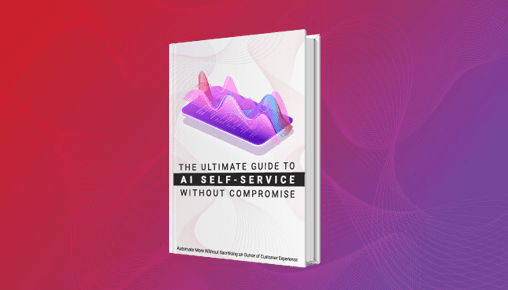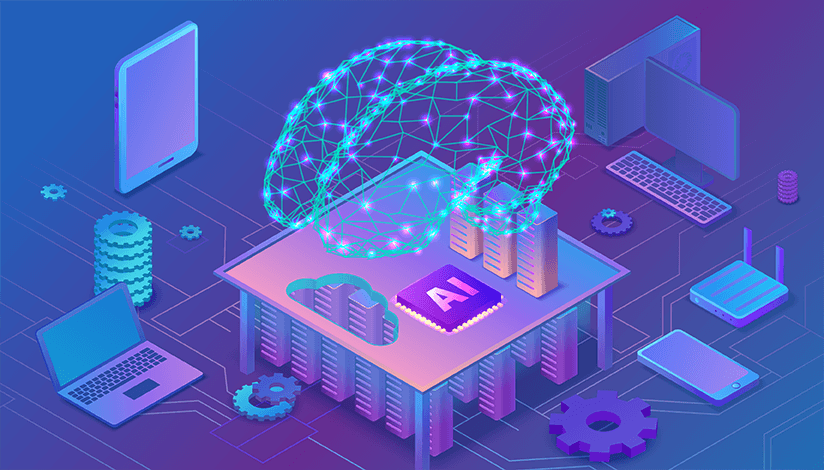Ask the Experts: Conversational AI Automation Step-by-Step

Everyone knows they need to implement conversational AI to automate more calls and chats, but there’s just one problem: conversations with machines aren’t easy. Join the interactive session where Purchasing Power’s Tiffany Anderson will detail the nitty-gritty on how they automated 25% of their call volume that used to be handled by live agents which lowered costs by 20% and increased NPS by 13%.
What You Will Learn:
- Step-by-step process for conversational AI self-service implementation
- Insights from a contact center leader who’s done it with proven success
- A plan for your contact center to introduce AI automation in the next six months
- How SmartAction’s AI-powered virtual agent solution works
Watch This
Webinar

Tiffany Anderson
Director, CX Process/Initiatives,
Purchasing Power

Brian Morin
Chief Marketing Officer,
SmartAction

Dan Fox
VP, Product Marketing & Strategy,
SmartAction
Step-by-Step to Award Wining AI-powered CX Over Voice
On-Demand Webinar
Brian Morin: Well, good morning and good afternoon, everyone. My name is Brian Morin. I’m the head of marketing here at SmartAction and welcoming those of you who are joining us today to hear from Tiffany Anderson with Purchasing Power, an e-commerce platform. And I’ll have Tiffany join in in just a minute to share a little bit about Purchasing Power. We’re just going behind the veil and getting the inside story on their journey from starting with conversational AI, self-service, where they started, and then Tiffany sharing any bumps and bruises along the way so that anybody else listening in can avoid those, and then get an understanding for the resulting impact that that has had on the business. Tiffany, I like to welcome you to today’s webinar. I just want to do a sound check to make sure you’re coming through okay.
Tiffany Anderson: Great. Yes. Hello. Thanks, Brian.
Brian Morin: Thanks, Tiffany. Now, remind me, you’ve had conversational AI implemented in your environment for how long?
Tiffany Anderson: Just a little over a year. We successfully 100% implemented the solution October one of last year.
Brian Morin: Okay, good. Those that are chiming in now and still joining, we’re just setting the table a little bit while we’re waiting on everybody else to come in. In the meantime, just as far as housekeeping, we do ask that the webinar today be audience driven as much as possible, as much as we have set content, and some of the Q and A that I’m going to step Tiffany through. Please chime in with your own comments and questions as we go along and we will address during the presentation portion. And anything that we don’t get to, we will get to it at the bottom of the hour when we do move to a full Q and A. So before I jump in with Tiffany and get her talking about her story, you may just wonder, well, who is SmartAction and why should you care? What is any street cred that we have in the marketplace to be speaking from?
Just a little bit about us, we provide AI powered virtual agents that automate the high volume and repetitive call types that are typically handled by live agents. You heard me say call types. We don’t exclusively do automation in voice. We typically start in voice and then scale that same application or experience digitally to chat or text. So it is an omni-channel, self-service solution, and it augments whatever technology you may already have in place, whether that’s in genesis, 59, nice and contact so on. And what makes us different is that we don’t just provide the conversational AI technology piece, but we do include all the CX services that you would need with it as part of the subscription service. Conversations with machines, they’re not easy. It’s not just design, build and poof, you’re done.
Tiffany will speak about that in just a minute. It is an ongoing iterative process of improvement, where you are from an ongoing standpoint, pouring through data, auditing, call recordings and transcripts, finding areas to improve machine learning. And we have a whole team who does this really well to make your life less hard and less hard for your customers to self-serve. So with that, Tiffany, let me throw it over at you. Maybe you could just tell the audience a little bit about yourself, your background, and tell us a little about Purchasing Power.
Tiffany Anderson: Most definitely. Thanks, Brian. So I have been in the customer experience, customer service world for gosh, almost 17 years now, which is so hard to believe. I had an opportunity to start my career at Toys R Us in the customer service space and was very heavily involved in a lot of the implementation of the customer service technology, for example, an IVR there.
So, learned very early on in my career about IVRs and the ability to offer customers, the opportunity to self-serve when they do run into a challenge or an issue that they need to pick up the phone and give us a call. With them, I transitioned over here to Purchasing Power just a little over two years ago in the same space in customer experience, where I’ve really been able to take what I’ve learned in my previous career and bring a lot of the learnings from a larger organization here to Purchasing Power, which is a smaller organization.
We’ve been around for about 18 years and we are an e-commerce specialty retailer that services directly through your employee benefits. So very similarly to paying in through a 401k or your health insurance, if your employer opts in to provide our solution as a benefit, our customers have an opportunity to come on our website, shop sales and services and different products that we offer and have an opportunity to buy those goods via payroll deduction. So kind of a very specialty niche retail, which is very, very fun to be a part of. But with that, being a smaller organization that’s been around still kind of in our teenage years, if you will, we’ve grown very quickly, 20% year over year in the past 18 years. And with that, it’s been, of course, those challenges of keeping up with those growing pains via those different technologies and self-services that we can offer to our customer.
And that’s where SmartAction came into play. About two years ago, actually we started conversations with them, right before I joined the organization actually. And we had an opportunity to build a great platform and a great feature where we’re giving our customers the opportunity to offer different self-service features if they do run into a challenge or an issue that they need to pick up the phone and call us. And that was not the case just last year, any call that get dialed through the phone with our 1-800 number 100% of the time went to our agents. And it was really our goal to optimize not only the customer’s experience, but also the agent’s experience, as well as filtering those true calls that really need that human interaction.
Brian Morin: Great. Thanks, Tiffany. So maybe just to help level set for our audience to get an idea of what is conversational AI doing for Purchasing Power right now, we’ll get into the story, but just to help the audience understand, when somebody calls in, Tiffany, maybe you could just step us through what’s happening now.
Tiffany Anderson: Sure. So today when our customers call, the very first thing that they are presented with is our front door application, and this front door application is really our authentication point in the customer’s journey when they call our 1-800 number. What’s great about this is we’re able to identify very early on, with two points of authentication, who we’re speaking to. What that allows us to do is offer those personalized self-service features later throughout the experience. So having that conversational IVR with our customers, where they have the opportunity to say or speak the information to us when it comes to authenticating themselves has really given us an opportunity to now grow the foundation that we’ve already established and eventually start adding on additional self-service tracks from what we originally implemented.
Brian Morin: So then what happens when somebody calls in, they’re authenticated and once they’re authenticated, what’s the very next thing that happens?
Tiffany Anderson: Sure. Our IVR, we lovingly call her Iva. So once the customer’s successfully authenticated against the data that we have on the customer in our database, Iva’s going to ask, “Thank you. In a few words, please tell me how I can assist you today. You can say things like where’s my order, password reset, account balance.” So we kind of give the customer a couple of different ideas.
Brian Morin: Give them some hints.
Tiffany Anderson: Yeah.
Brian Morin: Kind of interact.
Tiffany Anderson: Yeah, like a natural language menu of different ways that the customer can interact with us just by simply speaking to the IVR what the customer’s needs are at that time.
Brian Morin: So depending on the intent, then some of the intents that the system extrapolates in natural language, some of those are going to be intents that are intended for a live agent in those instances, then the virtual agent simply transfers that call for the live agent. But then if they hear something that it might be a case under order management or account management or billing or payment that someone can self-serve, then in those instances, they will just stay within automation.
Tiffany Anderson: Exactly. One of the great pieces about that authentication and offering that personal service is the customer really could go down a couple of these tracks. They may want to check their account balance prior to going in and researching where an order is to know if they want to come back and place another order. So it gives the customer the opportunity to really use the tool in the way that they need in that given moment. And Brian, to your point earlier, there are some calls that we’re not able to assist the customers with yet, but we do flag those words or those calls with what we like to call a hot word, so we can continue to monitor the different types of calls that are coming through. Even if we can’t offer that self-service solution today, where’s our opportunity for growth to potentially tune and optimize this application to really fit our customer’s needs?
Brian Morin: Good. So, Tiffany, let’s go ahead and just kind of back this up and start with your origin story. I think everybody, any of our clients, their origin story is usually slightly different. There’s some compelling reason that’s going to say why they do need to introduce some natural language automation and automate more. I was just speaking with DSW, Designer Shoe Warehouse, last week. Their compelling event was that they ran out of bodies that they could add to their call center. They were going to have to create a new second call center. So they just absolutely needed to automate. I spoke recently with AAA, another customer of ours. They handle emergency roadside assistance, call volumes just spike incredibly high during winter storms. And that’s just not scalable from a body standpoint, so they had to implement automation. So the reason why someone needs to automate more can be different in every organization. Maybe you can just tell us a little bit about what that was like for Purchasing Power and then kind of the mandate that you started with.
Tiffany Anderson: Most definitely. I mean, definitely the two bullet points that we’re looking at on the screen, lowering the cost, improving the experience. And one of our biggest challenges and opportunities within our very niche organization is we establish a relationship with our customers for 12 months with their payroll deduction of paying off for these goods and services. And so there are different challenges that arise in the customer’s experience even after they’ve received their items. And so there are different calls that the customer’s going to call us and no matter how amazingly built up SmartAction, they’re just not going to ever be able to self-serve. So having the opportunity to take those easy calls, if you will, where the customer can self-serve and get the information that they need and simply hang up and never make it to an agent really allows the agents the time and the energy to focus on those more difficult calls, those calls that are always going to land at the call center.
As much as we’d love to contain all of our calls that hit our 1-800 number, that’s just not a real-world case. And having that opportunity to funnel those real calls to the agents that need that personalized attention has been a big improvement, especially for the customers that reach the agent and then being able to offer that improved customer experience to those folks that are calling us and are able to contain and not having to speak to a live agent.
Brian Morin: I don’t know how many contact center leaders are able to easily swallow this kind of a mandate where it’s a bottom line, you’ll lower our operational costs, your initiative and oh, by the way, while cutting costs, also improve the customer experience while you’re doing that.
Tiffany Anderson: Exactly. One of the things I’d love to share with the group. We implemented our solution 100% October 1st, 2018. And in November 2018, just a month after our implementation, saw our best Net Promoter score and our lowest CTO, our lowest call per order in company history. And that was a real, real exciting data point to see, wow, our application is working and it’s working really well.
Brian Morin: So we’ll get into the results and takeaways portion of this here in a minute, but let’s kind of start with the beginning of your journey. Any prospective customer we’re speaking with, , they’re always on this side of the fence first, on the side of hesitation. They’re looking at challenges and wanting to automate more, but the idea of implementing natural language automation, gosh, do I really want to have to? Do I really want to hand off my CX to a machine and run the risk of not automating as well as we should? And something that maybe only our live agents can handle. So maybe you can just take us through a little bit, even not just even some of your hesitations, Tiffany, but hesitations within the organization. And how did you go about tackling some of those hesitations?
Tiffany Anderson: Sure. I think one of our biggest hesitations was just organization adoption of a new technology. Again, for 18 years, when you picked up the phone, customers were really trained to call and they were going to speak to an agent right away. So there was not only an organizational shift, but also that adoption from the customer as well. And making sure that we did our due diligence to ensure that the feature that we were putting in front of the customer didn’t impede their experience, but actually enhance their experience. And we work in a very different type of organization where we have our customer, but we also have our client that we’re considering.
And so taking on early on my partners in our client services department and our account management department to really show them what we were looking to do to put in front of the customer to improve their experience, to make sure they felt comfortable as well, because we also need to make sure the client understands what kind of technologies we’re looking to put in front of our customers. So the hesitations that we saw was just the adoption and understanding how we turn the ship very slowly to make more improvements for our customers.
Brian Morin: So, Tiffany, one of the things from the outset, I think would most look at this as it’s really about risk avoidance. They want the benefit of automation. They want to improve the CX, but how do you go through something that disruptive in the lowest risk manner possible? You and your team took a very low risk approach toward rolling this out and maybe you can talk about that a little bit.
Tiffany Anderson: Most definitely. So we, in partnership with SmartAction, we’re able to implement this feature in utilizing the agile methodology. So we built out our project plan. We identified the manner in which the tracks would roll out in bite sized chunks. So rather than building the entire application and pushing it to production all in one day, we literally took our time from about May to October where we began building. We actually pushed our first piece of the feature out live to a very small piece of our business early August. And we monitored that. We watched the data, we watched the experience. We ensured that the solution was delivering what we had said it would. And once we were able to sign off on that track and that piece and ensure the customer was able to flow through the IVR and get to the advocates, if that was the nature of their call, once we were able to sign off on that and we felt good from a project team, we were then able to release our next chunk.
So really by taking it in bite size manners and pushing it out to the production and slowly introducing it by 10% of our volume each time we did it. And then once we unveiled the entire solution October 1, we had 100% of our customers on a solution that we had already proven out that was working. And we had a lot of buy-in, all of the buy-in I should say, at the end of the implementation, because we had done it in a manner that we took the little chunks, we showed the data, we showed the results. We brought the executive team around the table to ensure that everybody was well-informed of how the feature was performing.
Brian Morin: So on the prior screen that we were looking at, it did note out a number of different self-service applications. You didn’t roll all of those out at once. Where did you start?
Tiffany Anderson: We started at the front door. I look at the front door as if the foundation of the application, because without that authentication piece, then our customers aren’t able to self-serve. So we built the front door. We tested it, very, very lengthy terms. That was actually the one that we tested the longest. Once we’ve vetted that out and we knew that we were seeing our customers were coming in, we weren’t seeing any failed API calls on our side, we weren’t seeing any errors on the SmartAction side, once we vetted that out, that customers were actually able to authenticate and get to our call centers, then we introduced the track my order, or like we like to call it where’s my order. So we introduced that piece right after the front door, which is our highest volume of call dispositions that we have. And we were able to watch slowly, surely customers being able to self-serve and track their package, using the SmartAction application.
Brian Morin: When you’re rolling out something like this toward your customers that has such an impact because it’s no longer your live agents who are handling all of your interactions, for a lot organizations, at least on the customer care side, they can have a lot of difficulty pushing this through stakeholders and getting executive buy-in. I heard somebody say one time that is akin to trying to push a healthcare bill through Congress. Maybe you can talk a little bit about how were you able to accomplish that at Purchasing Power and how difficult or not difficult was it.
Tiffany Anderson: Sure. I mean, really, and truly by, by taking the agile methodology and being able to analyze the data live with the customer’s experience and monitoring our survey data and reading our customer notes from customers that we had seen that had authenticated, and then maybe they called back another day, just really digging into the details and then sharing that, socializing that, with our cross functional peers, I mentioned two departments earlier on, our account management and our client services. I was constantly checking in with those folks to make sure that they weren’t having any escalations from our customers who are the employees of these employers that was now getting to our other branches of the organization. So it was really just continuing to socialize, gained the trust, all of the technology by showing the results and the data and being very adaptive and open to change and suggestions.
Brian Morin: Good. So I do encourage our audience listening if you have any comments or questions, just type that into the Q and A box or chat box, and we’ll answer it as we go along. Tiffany, let’s start here. It’s identifying first that perfect fit for virtual agents. We’ve talked about this before. It’s not about making sure that virtual agents are containing 100% of everything, but it’s finding that swim lane where they are going to deliver a CX as good or better than a live agent. So maybe you could just talk about how did you identify the perfect fit for virtual agents for Purchasing Power?
Tiffany Anderson: Most definitely. Right as we were beginning the initiative, we ran into our holiday time of 2017. And so we had an opportunity to take the data of our fourth quarter, our busiest time of the year, and really analyze the different call types that are coming into our call center. Because as I stated before SmartAction, every single customer that picked up the phone and called us, 100% of those calls landed in an agent’s lap. So we were able to do some really great analysis through Q4 all the way up until we did our kickoff in April 2018 and really built out a good roadmap and directive of how we were going to contain calls and what were those self-service features going to be that we wanted to offer based off of those top call drivers? And then we were also able to start to build a forecast of, well, what could our containment look like for our where is my order?
As an e-commerce company, that’s our number one call driver, customers wanting to track their packages that they’ve just ordered. And so by being able to take a look at real data during our busiest time of the year and build our roadmap and our plan for phase one, that’s where we really saw the biggest bang for our buck in the implementation of what I call phase one. I’m not finished, by any means, of providing self-service features to the customer. The main focus was where does the customer need? Where does that fit into their experience of how we can help them self-serve within the application?
Brian Morin: So, to some extent it was the low hanging fruit of what are the highest volume things that our live agents are dealing with that essentially are following a linear or to some extent near linear process?
Tiffany Anderson: Exactly. Exactly.
Brian Morin: Good. So let’s take a look at this on screen. When it comes to conversational AI, when someone arrives to the point where the decision has been made, that implementing it is assumed, the big question really comes down to how, and it’s this idea of going down the path of do it yourself, where you are, you procuring a SaaS software platform from a technology provider, building out your own team internally to design and build, then you provide all the ongoing support, or is it on the right? Is it going down the path of reaching out to a partner like us who is an expert in this area where you can simply outsource everything, the cloud conversationally iStack, all the CX services around it. Clearly you at Purchasing Power, you arrived at the camp on the right. Maybe you can take us a little bit through your own decision-making process on why you arrived there and you decided not to do it yourself and build out your own team.
Tiffany Anderson: Most definitely. I think one of the biggest wins with looking to a partner is that subject matter expert. They’re the experts in the field, such as SmartAction, who’s able to help us see our vision to fruition. And so building the business objectives with our roadmap and being able to have regular discussions throughout the implementation of how are other clients doing it, how are other customers doing it to make sure that we’re following suit of how a good customer experience can be? Though I’m a huge proponent and a big fan of IVRs, I am not as subject matter expert nor do I pretend to be one. So having that opportunity to have a partner like SmartAction was very beneficial for us to keep our project not only on time, but, most importantly, on budget for our implementation.
Brian Morin: Good. So let’s go ahead and just dig into a little bit now that you’ve been using the system for a little over the year, we put on screen maybe some of the top KPIs from a results standpoint and Tiffany, maybe you could just take us through and tell us what it’s meant for the business from a bottom line ROI standpoint and then also from a CX standpoint.
Tiffany Anderson: Most definitely. So the biggest one of, course, is the call containment at that 25%. Being able to offer that customer, the ability to take care of their question via the phone and not having to land at a live agent has been a very exciting number to watch not only from a forecasted perspective, but also on the dollar side, from a true savings, which is, of course, the decrease in cost and seeing how the work that we did over those five months, how we’ve been able to provide these different metrics, not only to our customer, but of course, to our bottom line. My most exciting metric though, on this screen was the Net Promoter score. Anytime you give your customer something new or you’re introducing a new technology, there’s always that concern of how are they going to, as a customer, interpret that and take that. And what was very exciting was seeing that the Net Promoter score only went up.
Our calls per order went down and we’re still seeing our growth of orders year over year. So we still have the orders that are coming through, but because we’re able to contain these calls and reduce our context to order we’re able to provide those customers with a much better experience. And our Net Promoter score shows that.
Brian Morin: Good. So on this slide, we kind of have this customer journey. Nearly every client that you’ll [get started with 00:25:30] the conversational AI, whether that’s with us or with somebody else kind of goes through their own arc. You related this from you initially starting with skepticism and hesitation to actually becoming a believer. Tiffany, I want us maybe take us through a little bit about your journey, having where you started, arriving here, but I also know that within Purchasing Power, you have your own metric that you use. I know that watching and monitoring this metric had a lot to do with this journey from skeptic to believer, how you look closely at the level of effort or the level of customer effort to get something done. So maybe you can tell us a little bit about that metric and what is the end goal in monitoring that and a little bit about your journey through this.
Tiffany Anderson: Most definitely. So just starting off, there was a bit of skepticism across the organization, just as you’re looking to introduce new technology, there is always that fear or concern. So the way we really started to bridge that gap to get from the frowny face up to the cheerful smiley face was keeping our cross-functional partners engaged and informed. And I think that one of the biggest pieces of new technology is just the continued conversation about the wins and the benefits, not only for organization, but most importantly, for the customer. Having implemented an IVR in the past, I was pretty aware that I was going to go through this very journey here on the sheet that we see in front of us. So I would say to anyone looking to do something of this nature, the earlier you begin to talk to your cross-functional peers and the other business owners, the better, because it gives everybody an opportunity to not only understand, but also give different insights and different thoughts.
And so that’s how we really truly progress our skeptics to the believers. And then to the low level of effort piece that Brian alluded to, we’ve been running a voice of the customer committee for the last 18 months and have seen great results from that specifically tied to our introduction of the SmartAction application and have watched it very closely to see how was our level of effort being presented to the customer specifically to how many times are they calling us and reaching out to us. And so being able to introduce a level of effort and metric within the application has been a really exciting metric to continue to watch, to see how does that level of effort go down while our Net Promoter score goes up.
Brian Morin: Right. So I know that we’re nearing here the bottom of the hour. We’ll likely be out of time to tackle the rest of the slides. We’ll want to talk about this one for sure. And then we can let those who need to drop off and move into Q and A, but this slide here in particular, Tiffany, we’ve chatted about this before. It’s almost as though that the first and most important thing to understand about conversational AI is that it’s not a product. It’s not like the days of touch-tone IVR where its first day was also its best day. These are conversations. We’re not in Kansas anymore. Conversations with machines aren’t easy.
And it is why you do need a team of experts, not necessarily AI experts, the technology is there, but you need CX experts across different disciplines who know how to design and build, and then go through that ongoing iteration piece where you’re poring through data and you’re making analytically driven decisions and constantly tweaking and tuning it and walking through that perpetual improvement. That’s what gets you to those amazing frictionless experiences for your customers. So, Tiffany, maybe you can just kind of tell us your own experience with this and speak to how the fact that it is a process that requires its own care and feeding.
Tiffany Anderson: Most definitely. I have a regular standing meeting with my customer support group over at SmartAction, where we’re constantly talking about tuning and reporting. We dig into the details of how the customer is using the application. What are they speaking to about with the agents, if they do get to our call centers and how can we look to tune and optimize the application? One of the really great things about the IVR is that it’s an intelligent tool. So as more and more customers are calling the application, the IVR is able to learn more and more about our customer. And I allow my SmartAction customer support team to help me identify how can we do just a few tunes and tweaks that’s not necessarily a whole big implementation, but maybe just a three week in flight tweak that we can easily make, come to terms of what the solution is going to look like, what it’s going to present.
We all agree to it and we can easily point it to production. Those are some of the really exciting things with this tool, because to Brian’s point, it’s not a set it and forget it. It is something that’s constantly being tuned and tweaked to stay relevant with our ever-growing business and our ever-changing business.
Brian Morin: Excellent. Thanks. So we try to keep ourselves here on the clock is as good as we possibly can. I will give you the next steps. We’ll move into Q and A and Tiffany, probably we’ll start with one of the first questions was maybe just some of those key takeaways for the audience. If you could travel back in time and sit yourself down, what would you share to your past self now that you wish you knew? But just on screen, as far as next steps, as soon as this webinar is over, you will receive a follow-up email that will have a copy of the deck. And as far as next steps you can take with us most start with one of two places. For some, it’s wanting to start with a demo carrying call types or seeing some of the chat interactions with other organizations that are similar to you in similar industries, or it’s just jumping in and saying, “Hey, we need someone to come in and help us examine our call types, our interactions, and to identify where’s the perfect place for AI automation.
“And what would a projected ROI look like if it were to be implemented?” We can help you in either of those fronts. And so you can just reach out to us. So if you do have to drop, we appreciate for your time and we will be following up with you, but for those that can hold on for Q and A, we’ll go ahead and jump right into that. And so, just as you can, you have a Q and A box or chat box, just enter your comment or question to either, and I will ask Tiffany as we go along, and while you’re doing that, Tiffany, let me come back to you. I kind of gave you that set up question about traveling back in time. What did you wish that you could know you before you started that now that might be most helpful for our audience?
Tiffany Anderson: Sure. Most definitely. I talked about engaging your cross-functional peers and your business partners early on, and then making them informed business owners from the very beginning. I did do that. However, I didn’t bring one of my specific departments closer into the project maybe as early as I had liked. Having an opportunity to discuss through from a business owner’s perspective, in this particular case, our supply chain manager, giving her an opportunity to give us some different insights of how we could make the self-service feature even better, that would be my biggest takeaway, my biggest call driver, bringing in that owner from the very beginning and tackling that one first, knowing that it was going to show me the biggest bang for the buck and just keeping my business peers involved and informed.
Brian Morin: So, Tiffany, the question here is how are you working with SmartAction or engaging SmartAction from an ongoing standpoint? I think what they really want to know is what does that relationship between you and SmartAction look like, maybe on, I don’t know, on a day to day, week to week, month to month. Are there things that you’re doing on your end and then things that SmartAction is doing on their end? What is the symbiotic relationship look like in a partnership between the both of you now?
Tiffany Anderson: Sure. Most definitely. So I have a great customer support team behind me, not only from my implementation side of the house, to just my day-to-day maintenance side of the house. And I have a weekly call with SmartAction every Friday. It’s the very first call that my contact over there gets to have. So I like to think he’s starting his day off the right way, but we talk very regularly, even if it’s not for our regular weekly call. If there’s something that we need to engage on sooner, we are constantly in contact. We’re working together to optimize the application, actually have my call with my contact tomorrow where we’re road-mapping 2020 and looking at what do we want to do? What is the application telling us we should do? So I’m constantly talking to my SmartAction contacts.
Brian Morin: And Tiffany, what kind of data are you looking at?
Tiffany Anderson: Sure. So there’s a portal that I utilize where I can pull raw data and take a look at what are the different call types. I can look to see what the customers are exiting out of the IVR as. I can even hear the calls prior to them transferring out of the application and hear what the customer engagement is like. That way I’m able to identify. Is there an opportunity from a tuning perspective on, is the IVR understanding what the customer is saying? So we use the tool for that. We also use the tool to really identify what’s the containment rate that the IVR is generating and that refers back to the 25% containment that Brian showed earlier on the presentation.
Brian Morin: So, Tiffany, a question here related just to, I guess, maybe the customer satisfaction of virtual agents versus live agents. How big of a disparity is there? I’m not sure if you’ve monitored that or are able to speak to it.
Tiffany Anderson: Well, we’re not monitoring a survey from the IVR today. We’re looking at all of our surveys coming from a post-purchase. So really where we’re doing that as spot checking through having the ability to listen to the caller while they’re still in the application. And of course, we rely on our advocates very heavily to give us that feedback and that input if a customer does get through the experience of the IVR and maybe it wasn’t really what they were expecting, and they have some feedback that they give to the agent. We have a call center manager that works here on my team that is in direct contact with the two operations managers at our call centers to just stay ticked and tied with how the experience is, whether they’re speaking to an agent or if they’ve come out of the IVR and they have some feedback.
Brian Morin: I’m sorry, I was on mute and I was just talking away. So somebody who’s just looking through the glass of my office is saying, “We can’t hear you.”
Tiffany Anderson: Oh, no.
Brian Morin: “Brian, you idiot.” So I was just saying, no other questions have come in. So what we will do just for housekeeping is not only get you a copy of the deck as soon as the webinar renders, we can deliver the on demand version that takes a little while, someone on the team will reach out to you likely tomorrow sometime with that so you can share the presentation with stakeholders should you deem necessary. And of course is on screen happy to follow up with you next steps. And you can reach out directly to us at info@smartaction.com. Tiffany, I can’t express enough thanks for you just taking the time and sharing a little bit about your journey and story.
Tiffany Anderson: Great. Thanks so much.
Brian Morin: Thank you, everybody, and hope you have a great day.





